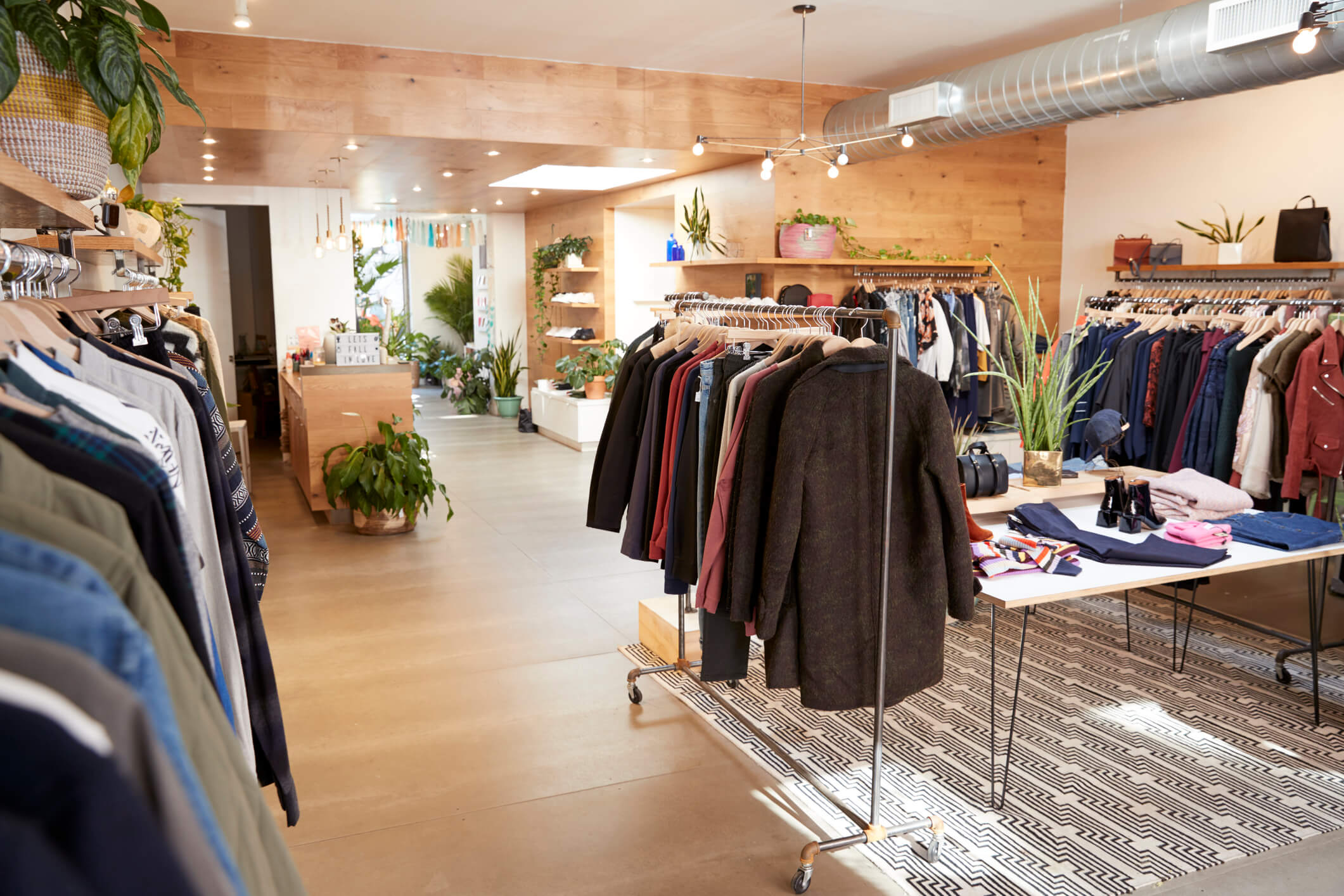Brick-and-Mortar:
Why It’s Becoming Obsolete Today
Brick-and-mortar retail establishments are rapidly becoming obsolete in today’s market as digital alternatives continue to erode their relevance. Physical storefronts that once dominated the commercial landscape now face existential threats from e-commerce platforms offering greater convenience, selection, and competitive pricing.
I’ve spent two decades guiding businesses through financial transformations at Complete Controller, and the data is undeniable: e-commerce has grown a staggering 121.6% since 2018, while physical retail managed just 28.6% growth—with virtually no growth since 2022. As consumers increasingly prioritize convenience and omnichannel experiences, businesses must adapt or risk joining the thousands of retailers closing their doors permanently. This article will examine why traditional retail models are failing, how successful retailers are responding, and what strategic opportunities exist for businesses caught in this monumental shift.

What makes brick-and-mortar retail obsolete today?
- Brick-and-mortar stores are becoming obsolete due to e-commerce growth, changing consumer preferences, and operational inefficiencies
- E-commerce sales have grown 121.6% since 2018 versus just 28.6% for physical retail, with digital shopping offering superior convenience
- Traditional stores struggle with high overhead costs and limited hours that can’t compete with 24/7 online access
- Retailers without strong digital integration face significant challenges adapting to omnichannel customer expectations
- Physical retail isn’t disappearing entirely but evolving toward experiential models that digital can’t replicate
The Erosion of Brick-and-Mortar’s Dominance
The retail landscape has undergone a fundamental transformation that continues to accelerate. While physical stores still account for the majority of sales, their market share and growth potential are steadily declining as digital alternatives capture an increasing portion of consumer spending.
Post-pandemic shifts accelerate decline
The COVID-19 pandemic permanently altered shopping behaviors, creating new habits that persist even after restrictions lifted. Remote work arrangements and mobile shopping capabilities have restructured daily routines, reducing impulse purchases and planned shopping trips to physical locations.
Between Q2 2022 and Q2 2024, e-commerce surged by 15.7% year-over-year while brick-and-mortar stores showed virtually no growth. E-commerce accounted for just 4.3% of U.S. retail sales in 2010 vs. 22.7% in 2024, showing a 428% penetration increase in 14 years.
Key Drivers of Physical Retail Decline
- Price sensitivity: 72% of in-store shoppers use mobile devices to compare prices before making purchases
- Inventory inefficiencies: Retailers like Joann Fabrics face bankruptcy due to overstocking and underperforming stores
- Seasonal volatility: A 0.9% drop in January 2025 retail sales highlighted weather-related vulnerabilities that online retailers don’t face
- Limited operating hours: Physical stores cannot match the 24/7 accessibility of e-commerce platforms
E-Commerce vs. Brick-and-Mortar: The Numbers Say It All
The statistical reality of retail’s transformation reveals why traditional retail is losing ground to digital alternatives. While brick-and-mortar still accounts for the majority of sales volume, the momentum clearly favors e-commerce.
| Metric | Brick-and-Mortar | E-Commerce |
| Total US Sales | $5.28 trillion (83.7% of market) | $1.47–1.50 trillion (15.2%) |
| Growth Rate | Stagnant since 2022 | 6.6% quarterly growth (2024) |
| Consumer Motivations | Immediate gratification, try-ons | Avoid crowds, 24/7 access |
| Operational Costs | High fixed expenses (rent, staff) | Lower overhead, scalable infrastructure |
The financial advantages of digital retail extend beyond immediate sales figures. E-commerce operations typically require less square footage, fewer staff members, and can scale more efficiently during peak seasons without the limitations of physical space.
Case Study: Joann Fabrics’ Downsize
Joann Fabrics filed for Chapter 11 bankruptcy in 2025, closing all 800 stores after failing to adapt to omnichannel demands and inflationary pressures. The craft retailer’s collapse illustrates how quickly market conditions can deteriorate for retailers overly dependent on physical locations. Despite a temporary pandemic-era boost from home crafting, the company couldn’t overcome:
- Rising real estate and labor costs
- Inventory management challenges
- Competition from more digitally agile competitors
- Insufficient omnichannel integration

The Retailer’s Dilemma: Adapt or Die
Physical retailers face an existential choice: transform their business models or face extinction. The path forward requires rethinking the purpose and function of physical space within a broader omnichannel strategy.
Surviving through omnichannel synergy
While 91% of consumers expect seamless integration between online and offline shopping experiences, only 56% of retailers deliver on this expectation. 45% of retailers cite system integration complexity as their top omnichannel obstacle, leaving 56% unable to sync online/offline inventories.
Successful adaptation strategies include:
- Click-and-collect models: Bridging digital convenience with in-store pickup to capitalize on both channels’ strengths
- Data-driven inventory management: Using online analytics to optimize in-stock levels and reduce carrying costs
- Experiential retail: Transforming stores into event spaces or community hubs that create reasons beyond merchandise to visit
- Mobile-first in-store experiences: Implementing technologies that enhance the physical shopping experience through digital tools
The most successful retailers view their physical and digital presence not as competing channels but as complementary touchpoints in a unified customer experience in retail.
Why Physical Stores Still Matter (For Now)
Despite the challenges, certain retail categories continue to thrive in physical spaces, suggesting that brick-and-mortar isn’t disappearing entirely but evolving into more specialized formats.
Niche Opportunities in a Digital World
Categories maintaining physical relevance:
- Groceries/convenience: 80.4% of global retail still happens in physical stores, with perishable goods leading this category
- Apparel/homeware: In-person try-ons and immediate purchases retain value for products where tactile experiences matter
- High-end luxury: Premium brands leverage exclusive physical environments to justify premium pricing
- Complex purchases: Products requiring consultation or demonstration benefit from in-person expertise
The local shopping experience still offers unique advantages that digital channels struggle to replicate, particularly for businesses that create meaningful community connections or provide services alongside products.
I’ve observed among our clients at Complete Controller that the most successful physical retailers maintain tight alignment between their inventory, staffing, and square footage. They’ve embraced “right-sized” brick-and-mortar footprints – keeping high-value stores while closing underperforming locations. This strategic approach maintains essential brand touchpoints without the financial strain of excessive retail space.
The Future: Blended Retail Models
Forward-thinking retailers are pioneering hybrid approaches that leverage the best aspects of both physical and digital retail, creating new business models that transcend traditional categories.
How winning retailers are reinventing physical spaces
- Mixed-use commercial real estate: Repurposing malls and shopping centers into office/entertainment complexes that drive foot traffic beyond shopping
- Pop-up partnerships: Creating temporary brand experiences in high-traffic locations to generate excitement without long-term leases
- AI-powered in-store tech: Implementing augmented reality product demos and smart inventory systems that enhance the shopping experience
- Experiential retail hubs: Nike and Lululemon saw 6-11% foot traffic growth in 2023 by adding AR fitting rooms and yoga studios, while traditional apparel stores declined 8%
These innovations represent the emerging future of omnichannel retail – one where physical retail trends evolve toward creating memorable experiences that digital shopping can’t replicate, while embracing digital tools to enhance efficiency and reach.
Conclusion
The obsolescence of traditional brick-and-mortar retail isn’t simply about the rise of e-commerce—it’s about fundamental shifts in consumer behavior, technological capabilities, and business economics. Physical retail isn’t disappearing, but its role is transforming dramatically.
Retailers that recognize this shift and adapt accordingly can still thrive by:
- Creating purposeful physical spaces that offer what digital cannot
- Integrating online and offline channels into a seamless customer journey
- Using data to optimize inventory, staffing, and square footage
- Embracing experiential elements that drive meaningful engagement
I’ve guided hundreds of businesses through financial transformations at Complete Controller, and the retailers who succeed in this challenging environment share one common trait: they view disruption as an opportunity rather than a threat. They leverage their physical presence as a strategic asset within a broader digital ecosystem rather than clinging to outdated operating models.
👉 Action Step: Is your retail business struggling with the transition to an omnichannel model? Explore how Complete Controller’s financial tools and expertise can help you optimize your brick-and-mortar operations while building digital capabilities. Visit completecontroller.com to learn more about our retail-specific solutions.

FAQ
What percentage of sales come from physical stores?
Approximately 83.7% of US retail sales in 2024 still occur in physical stores, though this percentage continues to decline as e-commerce grows. The most dramatic shifts are happening in categories like electronics, books, and apparel.
Why are more retailers closing stores?
Economic pressures and underperformance drive closures, with 15,000+ stores projected to close in 2025. Key factors include rising real estate costs, labor expenses, changing consumer preferences, and inability to compete with e-commerce convenience and selection.
How can small businesses stay competitive against online giants?
Small businesses can compete by investing in mobile integration, creating unique experiential retail elements, maintaining lean physical footprints, and focusing on personalized service that online giants struggle to provide. Community engagement and local relationships remain powerful differentiators.
Does e-commerce actually offer better pricing for consumers?
Online platforms enable instant price comparisons, creating transparency that typically benefits consumers. While shipping costs can offset some savings, e-commerce’s lower overhead and ability to operate at scale generally allows for more competitive pricing, especially for non-perishable goods.
Will brick-and-mortar stores completely disappear in the future?
Complete disappearance is unlikely, but remaining stores will focus increasingly on experiences unreplicable online. Physical retail will continue evolving toward showroom models, experiential spaces, and service centers rather than traditional merchandise-focused environments.
Sources
- Business Insider. “Nike and Lulu Stores Draw in Customers With Experiential Stores.” A. Fisher. March 17, 2023. https://www.businessinsider.com/nike-and-lulu-stores-draw-in-customers-with-experiential-stores-2023-3
- CactusLadyCreation. “The Boom and Bust of Joann: Here’s How It All Fell Apart.” January 26, 2025. https://cactusladycreation.com/blogs/news/the-boom-and-bust-of-joann-here-s-how-it-all-fell-apart
- Digital Commerce 360. “Ecommerce vs Brick-and-Mortar Stores Statistics 2025.” January 31, 2025.
- FitSmallBusiness. “Ecommerce vs Brick-and-Mortar Stores Statistics 2025.” January 31, 2025.
- Forbes. “How Omnichannel Retailing Can Boost Customer Experience.” June 23, 2021. https://www.forbes.com/sites/forbesbusinesscouncil/2021/06/23/how-omnichannel-retailing-can-boost-customer-experience/
- LightboxRE. “Retail Sales Decline Amid Transformation in Commercial Real Estate.” February 21, 2025.
- Rinf.tech. “Omnichannel Retail: Technologies, Challenges, and Opportunities.” 2024. https://www.rinf.tech/omnichannel-retail-technologies-challenges-and-opportunities
- Statista. “Brick and Mortar Retail.” 2024. https://www.statista.com/topics/1133/brick-and-mortar-retail/
- UnivDatos Market Insights. “Experiential Retail Market Growth and Share Report, 2032.” November 2024. https://univdatos.com/reports/experiential-retail-market
- U.S. Census Bureau. “E-commerce 2000.” March 18, 2002. https://www.census.gov/library/publications/2002/econ/2000-e-stats.html
- Wikipedia. “Brick and Mortar Business.” https://en.wikipedia.org/wiki/Brick-and-mortar_business
- WolfStreet. “The Only Thing Pushing Up Retail Sales Is Ecommerce.” August 19, 2024.
 About Complete Controller® – America’s Bookkeeping Experts Complete Controller is the Nation’s Leader in virtual bookkeeping, providing service to businesses and households alike. Utilizing Complete Controller’s technology, clients gain access to a cloud platform where their QuickBooks™️ file, critical financial documents, and back-office tools are hosted in an efficient SSO environment. Complete Controller’s team of certified US-based accounting professionals provide bookkeeping, record storage, performance reporting, and controller services including training, cash-flow management, budgeting and forecasting, process and controls advisement, and bill-pay. With flat-rate service plans, Complete Controller is the most cost-effective expert accounting solution for business, family-office, trusts, and households of any size or complexity.
About Complete Controller® – America’s Bookkeeping Experts Complete Controller is the Nation’s Leader in virtual bookkeeping, providing service to businesses and households alike. Utilizing Complete Controller’s technology, clients gain access to a cloud platform where their QuickBooks™️ file, critical financial documents, and back-office tools are hosted in an efficient SSO environment. Complete Controller’s team of certified US-based accounting professionals provide bookkeeping, record storage, performance reporting, and controller services including training, cash-flow management, budgeting and forecasting, process and controls advisement, and bill-pay. With flat-rate service plans, Complete Controller is the most cost-effective expert accounting solution for business, family-office, trusts, and households of any size or complexity.
 Reviewed By:
Reviewed By:




